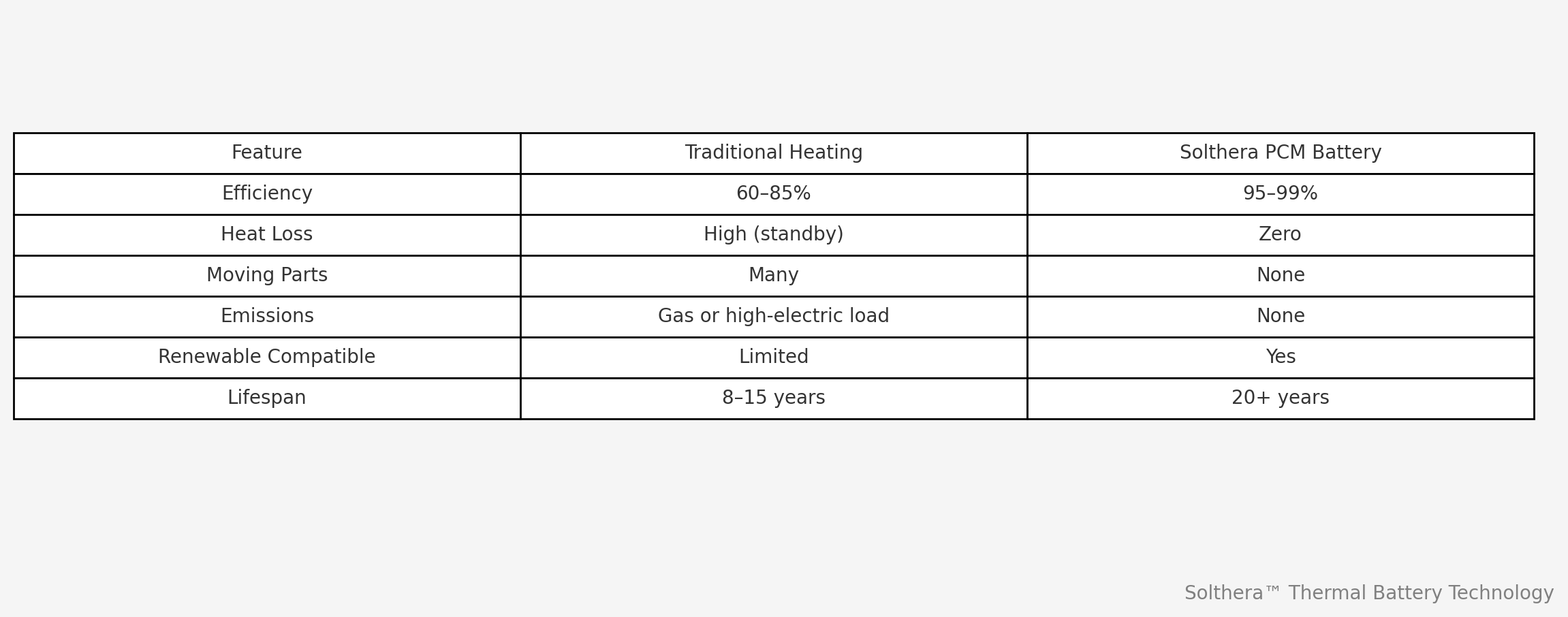

That’s the revolutionary idea behind phase change materials (PCMs)—and they’re at the heart of Solthera’s thermal battery.
In a world racing toward electrification and clean energy, thermal energy storage is a game-changing advancement. And unlike old-school water tanks or resistive heating coils, Solthera uses advanced PCMs to turn heat into something you can store, move, and deploy with near-zero energy waste.
Let’s explore what PCMs are, how they work, and why they’re the future of hot water and thermal storage.
A phase change material (PCM) is a substance that absorbs and releases thermal energy during the process of melting and solidifying.
Here’s the key:
This makes PCMs perfect for storing thermal energy—without any moving parts, combustion, or complicated mechanics.
Think of Solthera’s PCM-based battery as a heat sponge with a memory.
It’s reversible, repeatable, and ridiculously efficient—a closed-loop system that works day after day without degradation.
Let’s compare PCMs to traditional systems like tanks and tankless heaters:

PCMs give Solthera the edge in durability, compatibility, and energy conservation—especially in off-grid or solar-integrated systems.
Solthera’s proprietary PCM formula is engineered to:
You don’t need to understand molecular thermodynamics to appreciate it. But in short: PCMs allow Solthera to store more heat in less space and with fewer losses than anything else on the market.
PCMs are modular and versatile—making them a natural fit for:
Unlike traditional systems that burn out or become obsolete, Solthera’s PCM-based batteries are future-proof.
Solthera’s PCM technology is already trusted by:
Now it’s available to homeowners, developers, and builders ready to embrace the next evolution of heating.
Want to go deeper or see the system in action?